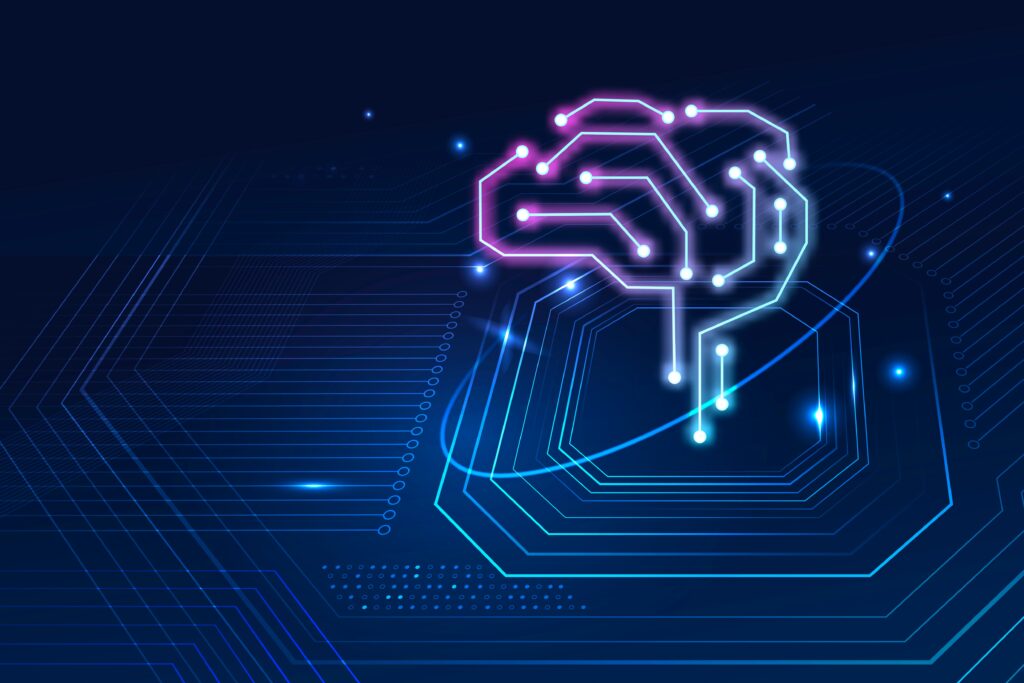- Services

Software Development Services.
Accelerate your tech projects with outsourced development. Flexible engagement models, tailored to you.
Engagement models
You can hire our software developers in different ways
Staff Augmentation
Our software developers in your team.
Dedicated Teams
Our software teams in your organization.
Software Outsourcing
Our PM and software teams building for you.
- Expertise
Expertise
Leverage our deep industry knowledge and innovative solutions to achieve your business goals.
- Industry
Industry
Tailored solutions and insights for a wide range of industries to drive success and growth.
- Portfolio
Portfolio
Explore our impactful case studies and see how we've driven success for our clients.
- Company
About Us
Who we are and how our vision became reality.
Life at Tplex
Industry-recognized. Award-winning.
Location
Location
Resources
What Is Machine Learning?

In the day and age where digital transformation largely determines the success of a company, machine learning has become even more important. Let’s think of it this way: how many times has Netflix recommended you a show that you ended up loving? That is, machine learning helps you with your life.
Imagine a world where machines can think, learn, and adapt. This isn’t the stuff of science fiction—it’s happening now. Machine learning is the technology that enables computers to learn from data and make decisions without being explicitly programmed for each task. Machine learning is transforming your world in more ways than you could ever imagine.
In this blog, learn all about what machine learning is and how it works!
What is Machine Learning?
The field of artificial intelligence (AI) known as machine learning (ML) gives computers the capacity to automatically learn from data and prior experiences in order to recognise patterns and make predictions with the least amount of human intervention.
Machine learning methods allow computers to operate independently without the need for explicit programming. These applications are fed with new data, and they can allow for independent learning and growth to happen. This way, insightful data comes out of leveraging these algorithms, which makes learning so much easier.
In most fields like healthcare and finance, machine learning has become more important.

Types of Machine Learning
Machine learning can be classified into different types, based on how they can learn from the data given, and also the different applications that exist. Each type has its own methods, advantages and also real-world applications.
- Supervised Learning
In the supervised learning paradigm of machine learning, models are trained using labeled data. This indicates that input-output pairs—in which the output (label) is known—are included in every training example. By seeing patterns in the data, the model can translate the input into the output. Similar to studying with a teacher, supervised learning provides the model with clear instructions on the appropriate outputs for specific inputs.
Examples of this type include spam detection, image classification and recommendation systems. For example, when we talk about spam detection, you must have noticed how your system might itself tell you what emails look like spam. This happens by way of making use of supervised learning algorithms. By focusing on the specific features in the email content, the training data labels different emails as spam or not, allowing the models to learn different patterns that indicate these things in the best way.
- Unsupervised Learning
As the name suggests, this technique is one that is devoid of supervision. So here, the focus is on using an unlabeled dataset that can predict output without any supervision. This aims to group the unsorted data based on the similarities and the differences in the patterns.
Take an input dataset comprising pictures of a container packed with fruit, for instance. In this case, the machine learning model is unfamiliar with the photos. The objective of the machine learning model is to recognise and classify patterns in the input images, such as colour, form, or differences, based on the dataset that is fed into it. Once the machine has been classified, it is tested using a test dataset, and its output is predicted.
- Semi-Supervised Learning
This is a hybrid approach that combined elements of each type. This works by making use of a small amount of labeled data and a big amount of unlabeled data to ensure learning accuracy. This approach is very useful, specially when it comes to improve the accuracy of learning. In the cases when labeling data can be very time consuming, this model works best.
Medical imaging analysis is an ideal example of how this works. Because professional annotations are required, acquiring labeled data in medical imaging can be difficult. A small number of labeled medical photos combined with a large number of unlabeled ones can be used in semi-supervised learning to train models that more effectively detect abnormalities or diseases in medical scans.
- Reinforcement Learning
This is very different from the above types. It is a feedback-based process, where AI makes use of hit and trial, learns from experiences and improves overall performance. every good action is rewarded and every wrong one is penalized. So the idea is to maximize the rewards that come from this by performing good actions.
Again, this does not have labeled data. It is mainly experience that allows learning to happen. An ideal example to help you understand this better is that if video games. In this case, the environment is defined by the game, and the reinforcement agent’s movements define its state. The agent can be rewarded or punished, which will change the agent’s overall score in the game. Getting a high score is the agent’s ultimate objective.
Both positive and negative reinforcement happens here. Positive reinforcement is when the reward is added after a behavior, whereas negative reinforcement is when the behavior is strengthened due to it avoiding a negative outcome.
In the world of machine learning, it is very important for you to have the right tools. These tools are like building blocks that help you with every step of the way and allow you to deploy different machine learning algorithms.
Let’s learn more about the most popular machine-learning tools and how these can help you!
- Python for Machine Learning
Because of its ease of use and readability, Python is a popular language for machine learning and is a fantastic option for novices. It also boasts a robust machine learning-specific library ecosystem.
Matplotlib is used for data visualisation, whereas libraries like NumPy and Pandas are utilised for data analysis and manipulation. A vast array of machine learning techniques is offered by Scikit-learn, and TensorFlow and PyTorch are used to construct and train neural networks.
- R for Machine Learning
R is still a highly effective tool for machine learning and statistical analysis, especially among statisticians and in academic settings. R’s large package library, which includes tools like randomForest and caret, makes it easier to analyze and visualize complex data, which makes it a useful tool for statistical modeling and hypothesis testing.
- TensorFlow
This is an open course library that works by way of numerical computation. It is best for large scale machine learning. Initially developed by the Google Brain team, it supports CPUs and GPUs. It is one of the most popular machine learning tools, largely because it allows you to train very complex systems.
- Scikit-learn
A large selection of machine learning techniques for both supervised and unsupervised learning are available with the Python package Scikit-learn. It’s renowned for its thorough documentation and intuitive API.
Scikit-learn works nicely with other Python libraries like NumPy and Pandas and is frequently used for data mining and analysis.
- Keras
This is a very high-level neural network API. It is written in Python and can run on top of TensorFlow, CNTK, or Theano. The idea behind this was to ensure very fast experimentation. With a very user-friendly interface, it makes this a great choice for deep machine learning.
- Jupyter Notebook
This provides an interactive environment for creating and running code. Because it can accommodate live code, equations, visualisations, and narrative text, it’s perfect for exploratory data research, data analysis, and communicating discoveries through attractive notebooks.
- Google Cloud AutoML
A range of machine learning tools from Google Cloud AutoML automates the whole machine learning process, from data preparation to model training and deployment. This makes it possible for individuals with no prior ML experience to create excellent models that are customized to meet their unique requirements.
Related: Top 10 Programming Languages for Artificial Intelligence
Top 10 Programming Languages for Artificial Intelligence
Navigating the world of technology can be hard. When it comes to machine learning, you might find yourself confused.
At TPLEX, we can help you. We have been in this field for many years now, and have the expertise you are looking for. Whether you are looking for a machine learning engineer, or just general assistance to help you find your way through something, we can assist.
What do you think?


